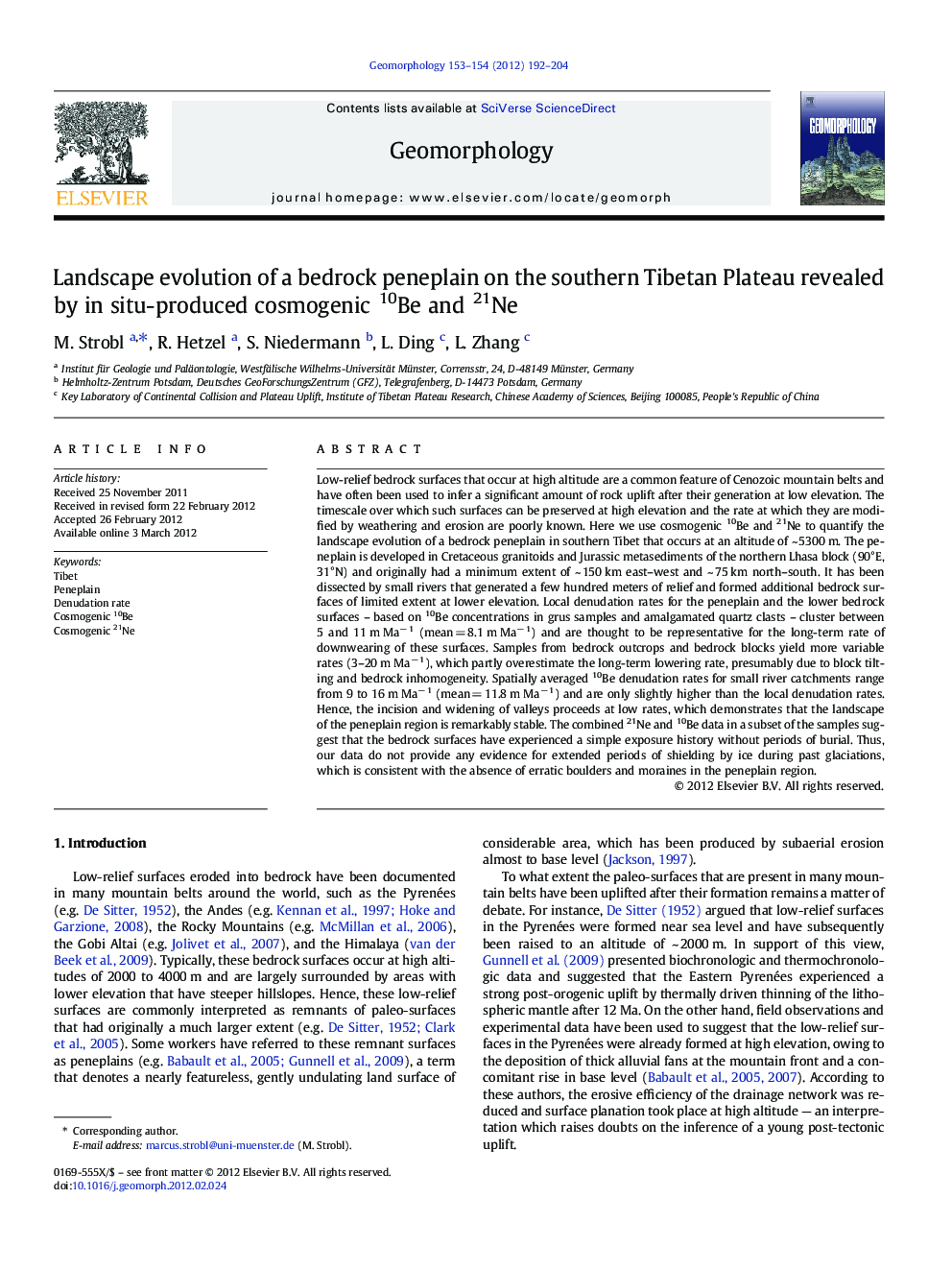| کد مقاله | کد نشریه | سال انتشار | مقاله انگلیسی | نسخه تمام متن |
|---|---|---|---|---|
| 6432943 | 1635482 | 2012 | 13 صفحه PDF | دانلود رایگان |

Low-relief bedrock surfaces that occur at high altitude are a common feature of Cenozoic mountain belts and have often been used to infer a significant amount of rock uplift after their generation at low elevation. The timescale over which such surfaces can be preserved at high elevation and the rate at which they are modified by weathering and erosion are poorly known. Here we use cosmogenic 10Be and 21Ne to quantify the landscape evolution of a bedrock peneplain in southern Tibet that occurs at an altitude of ~ 5300 m. The peneplain is developed in Cretaceous granitoids and Jurassic metasediments of the northern Lhasa block (90°E, 31°N) and originally had a minimum extent of ~ 150 km east-west and ~ 75 km north-south. It has been dissected by small rivers that generated a few hundred meters of relief and formed additional bedrock surfaces of limited extent at lower elevation. Local denudation rates for the peneplain and the lower bedrock surfaces - based on 10Be concentrations in grus samples and amalgamated quartz clasts - cluster between 5 and 11 m Maâ 1 (mean = 8.1 m Maâ 1) and are thought to be representative for the long-term rate of downwearing of these surfaces. Samples from bedrock outcrops and bedrock blocks yield more variable rates (3-20 m Maâ 1), which partly overestimate the long-term lowering rate, presumably due to block tilting and bedrock inhomogeneity. Spatially averaged 10Be denudation rates for small river catchments range from 9 to 16 m Maâ 1 (mean = 11.8 m Maâ 1) and are only slightly higher than the local denudation rates. Hence, the incision and widening of valleys proceeds at low rates, which demonstrates that the landscape of the peneplain region is remarkably stable. The combined 21Ne and 10Be data in a subset of the samples suggest that the bedrock surfaces have experienced a simple exposure history without periods of burial. Thus, our data do not provide any evidence for extended periods of shielding by ice during past glaciations, which is consistent with the absence of erratic boulders and moraines in the peneplain region.
⺠10Be denudation rates indicate long-term stability of a peneplain in south Tibet. ⺠Combination of 21Ne and 10Be suggests a simple exposure history for the peneplain. ⺠Accumulation of ice during past glaciations can be ruled out for the peneplain region.
Journal: Geomorphology - Volumes 153â154, 1 June 2012, Pages 192-204